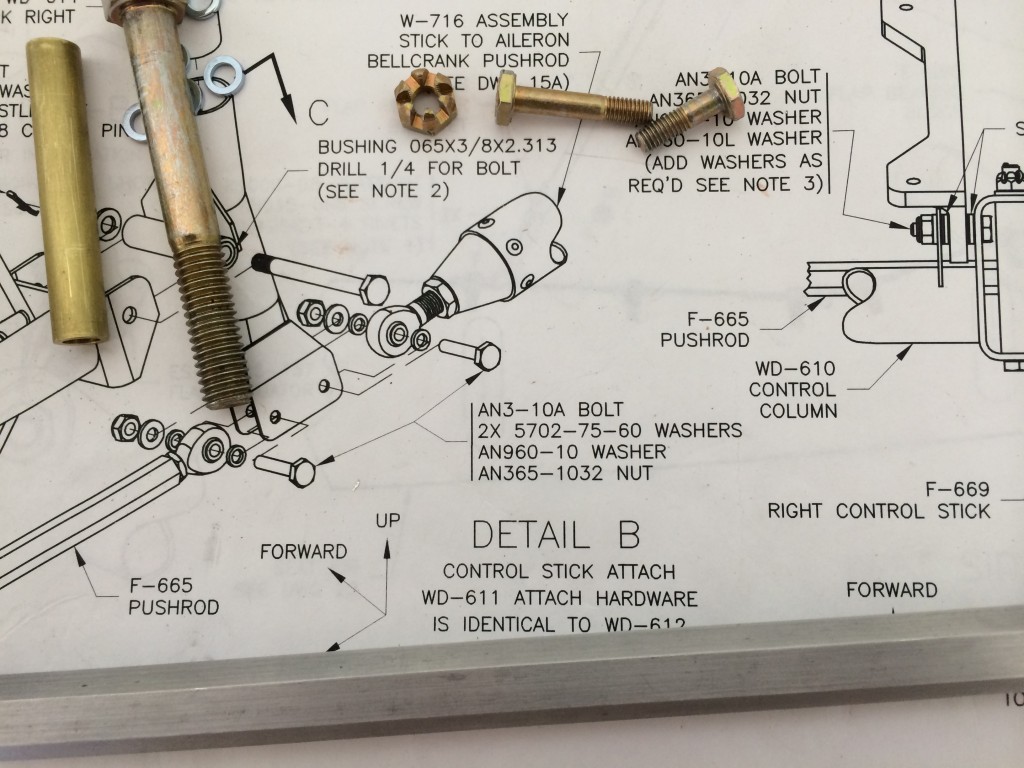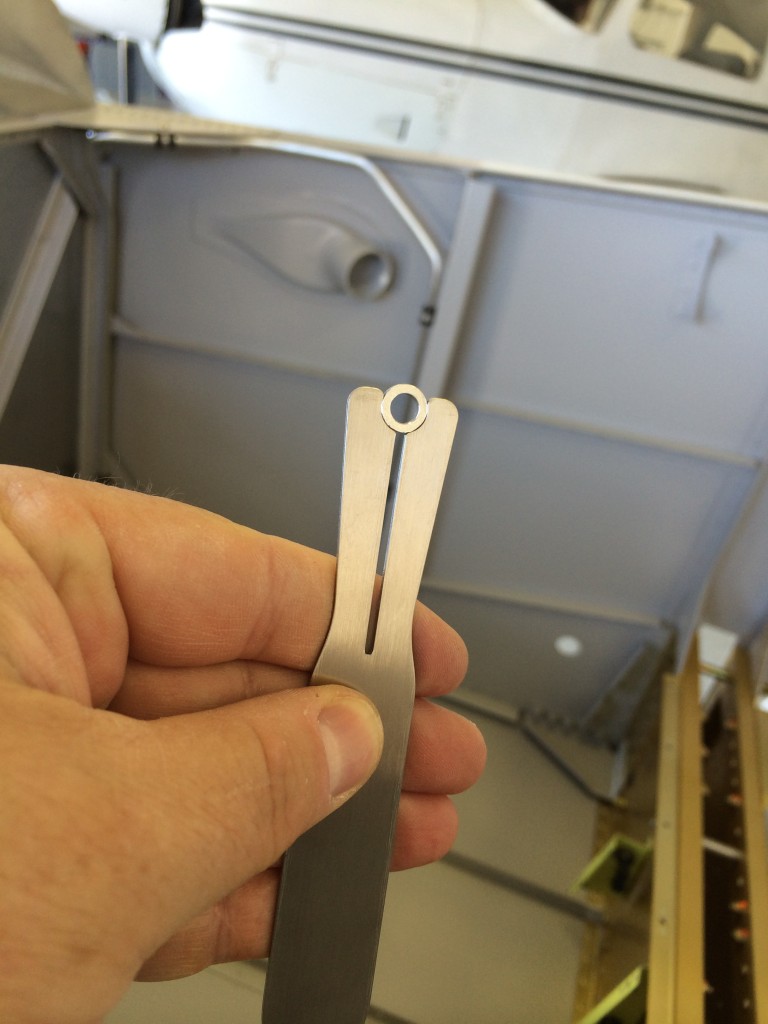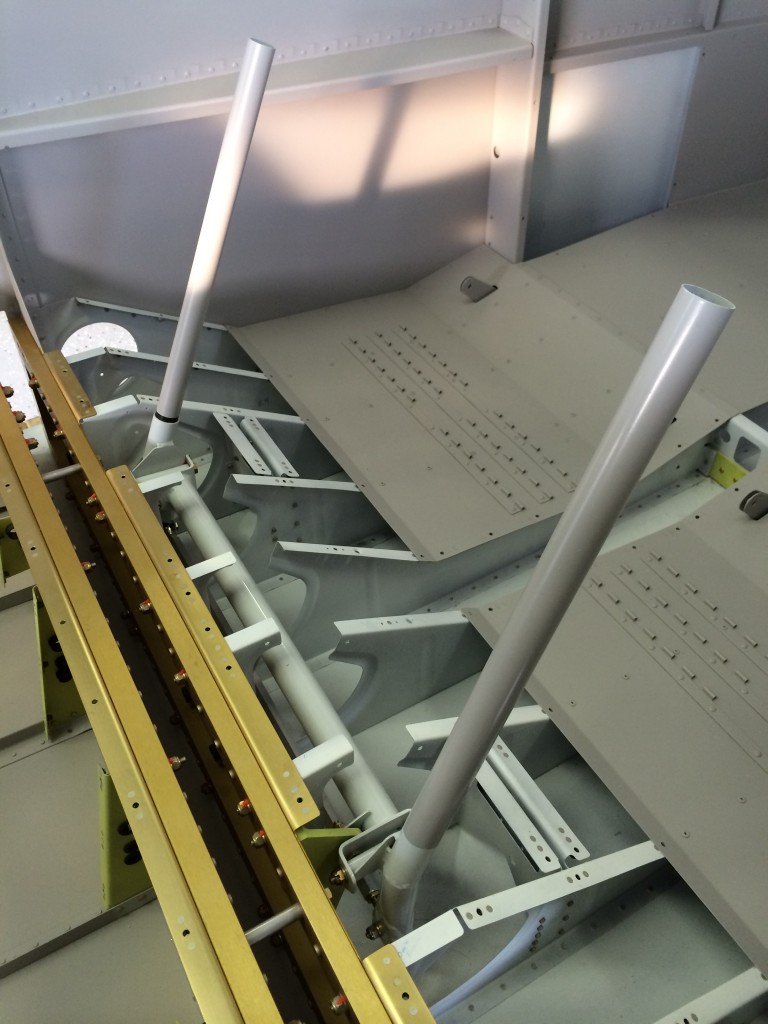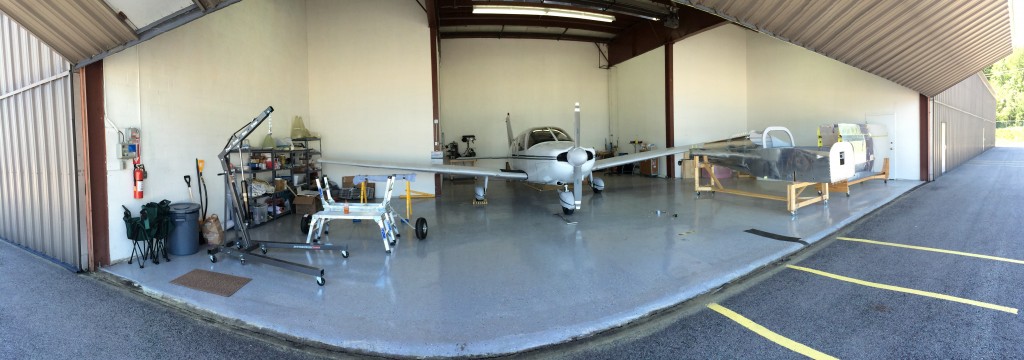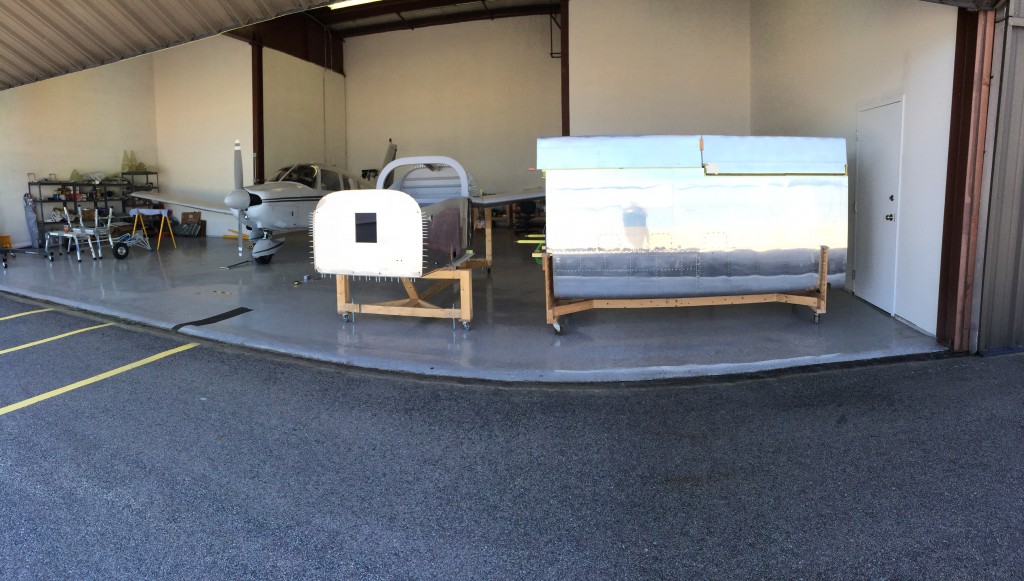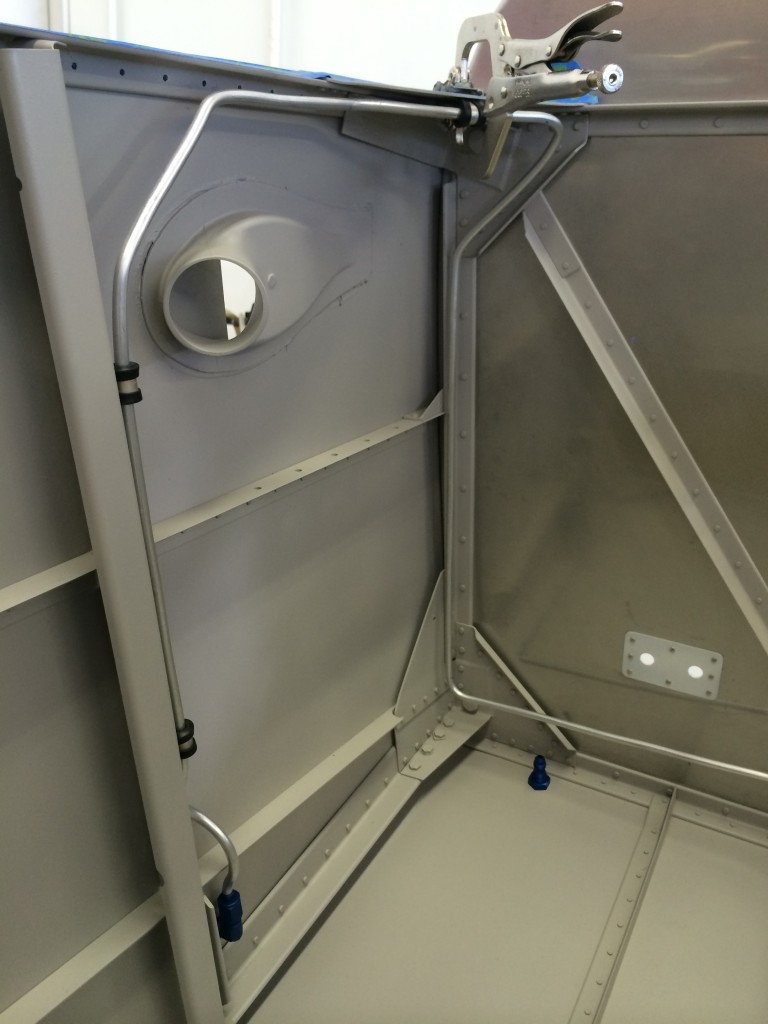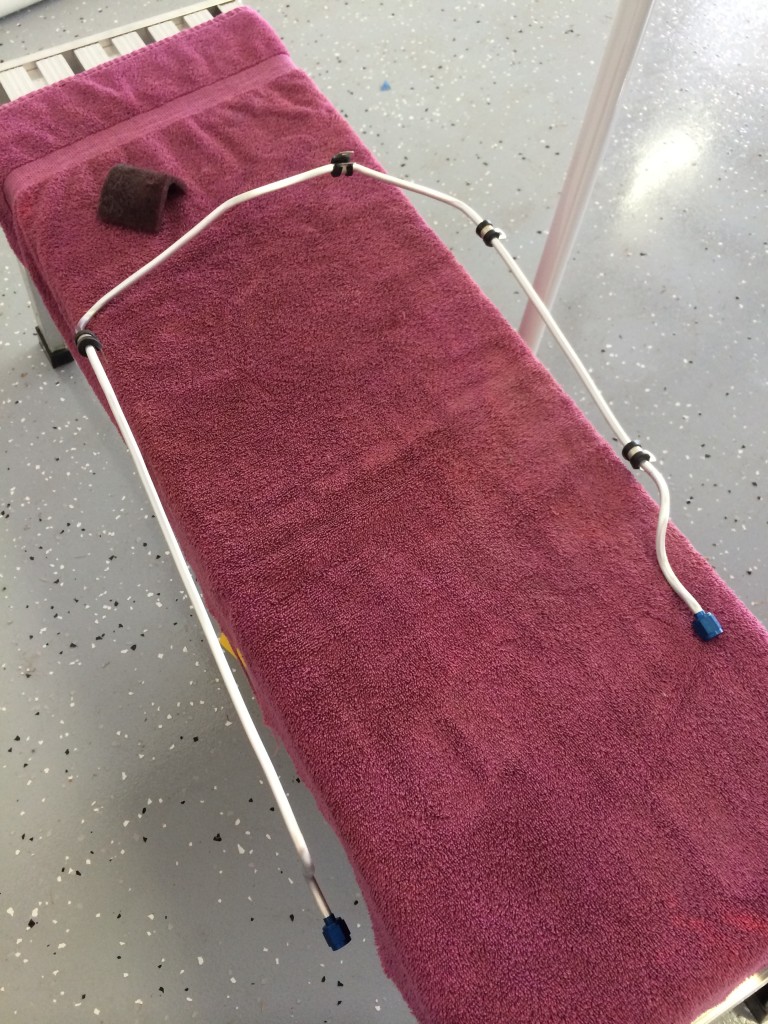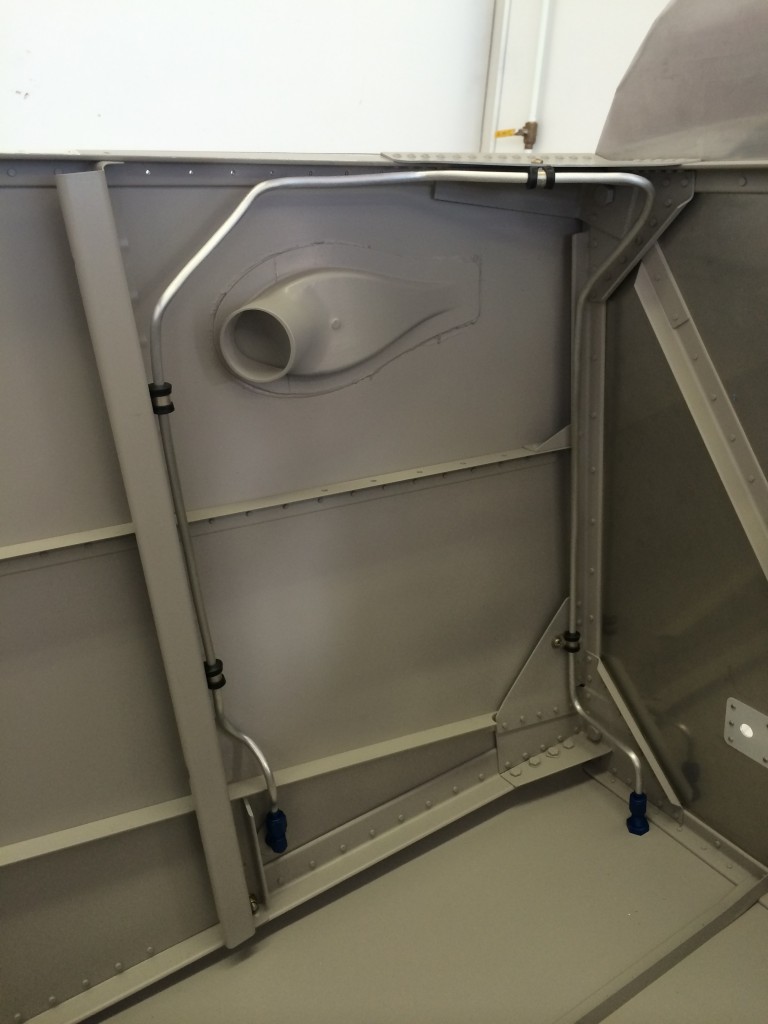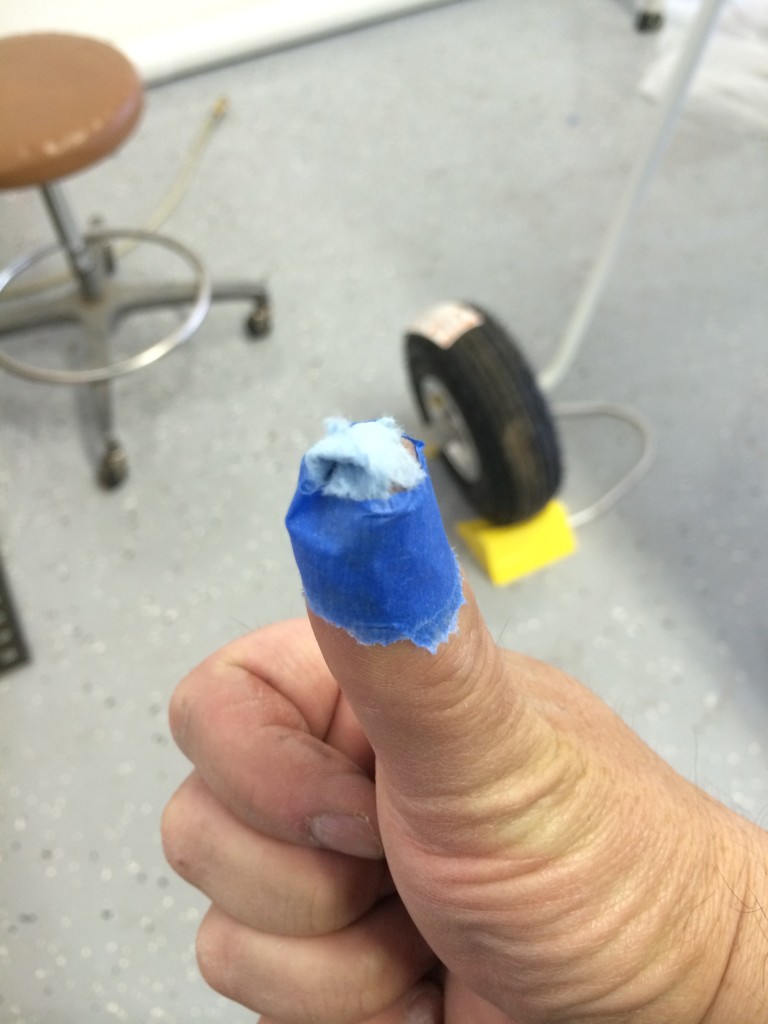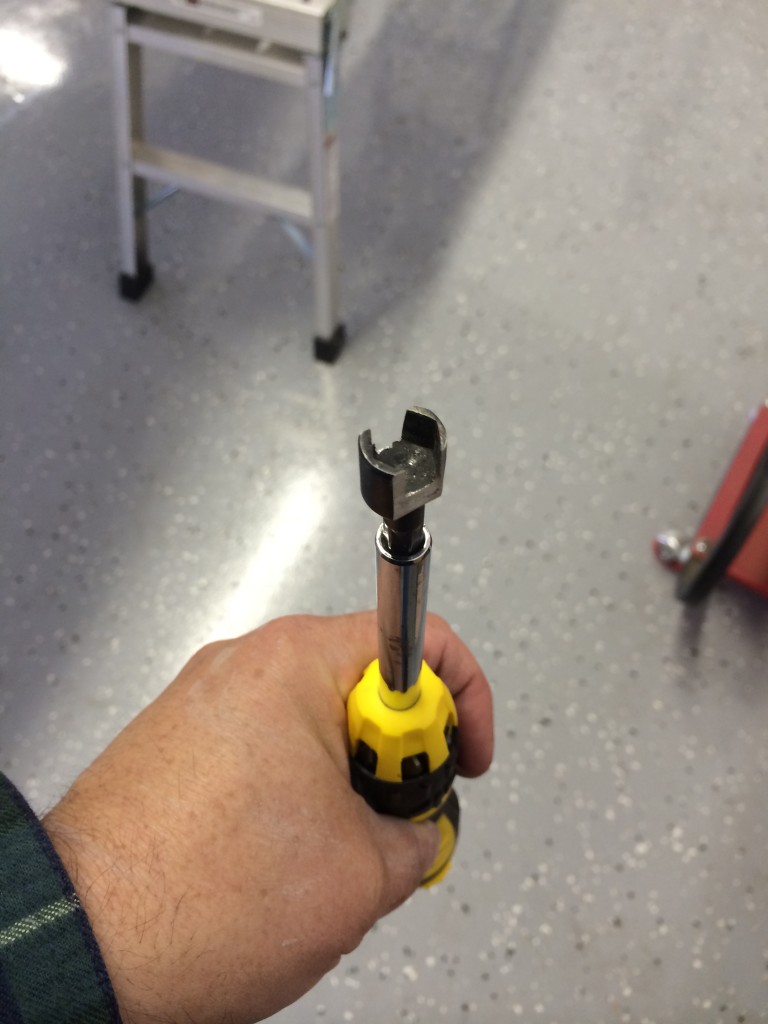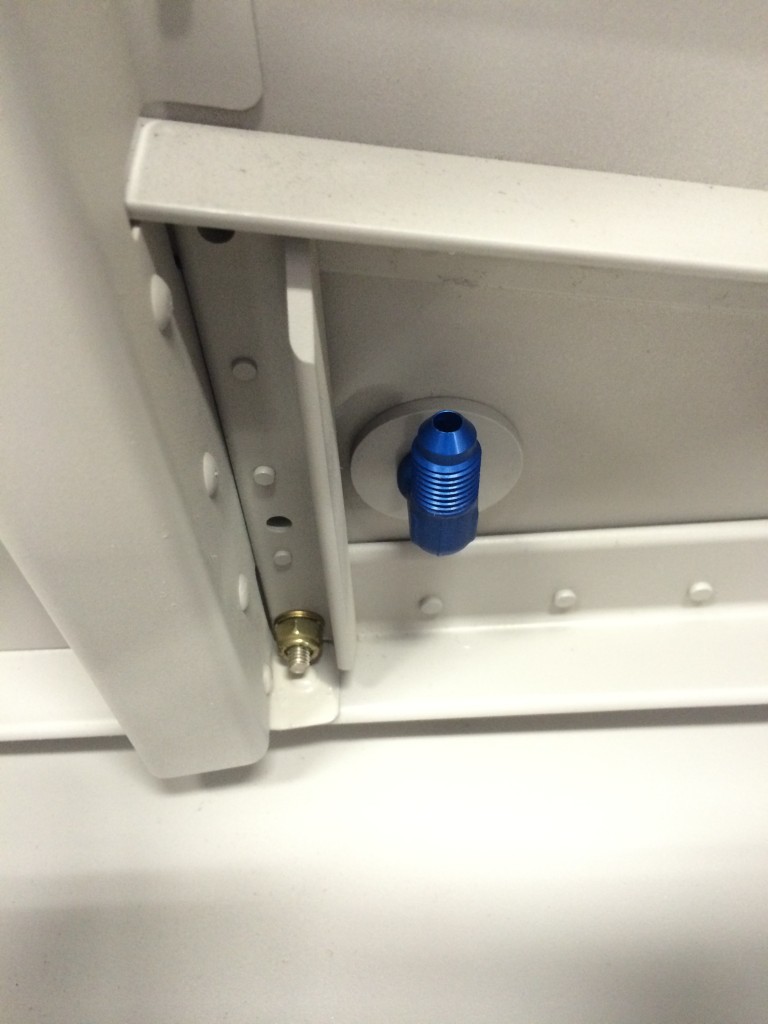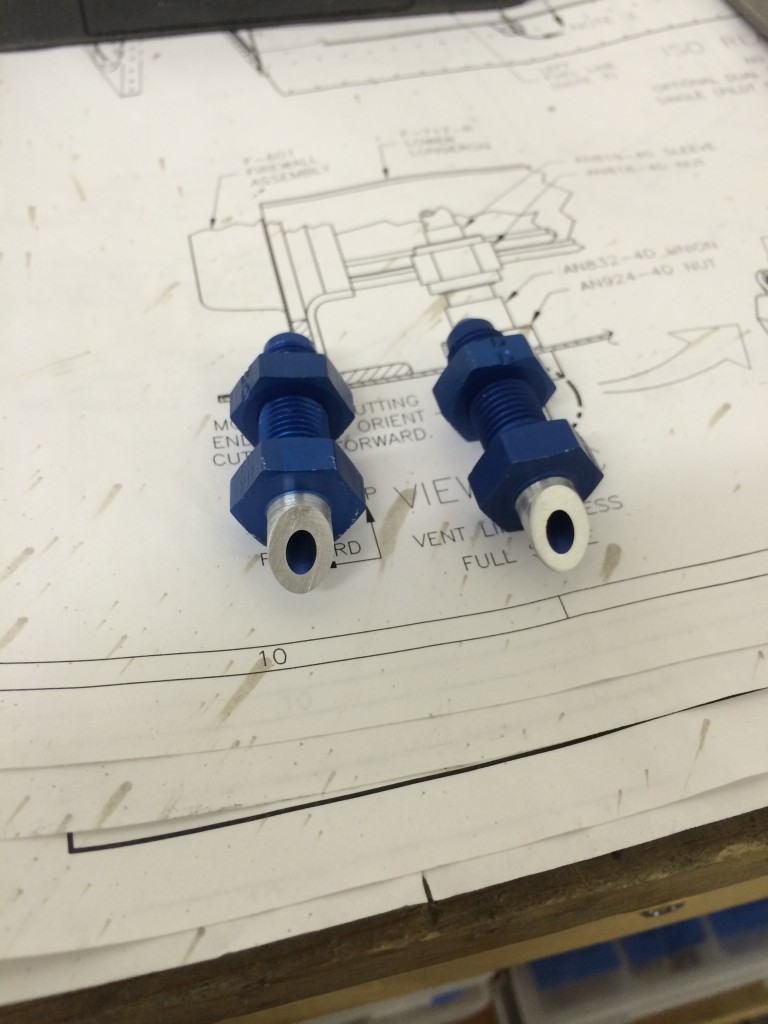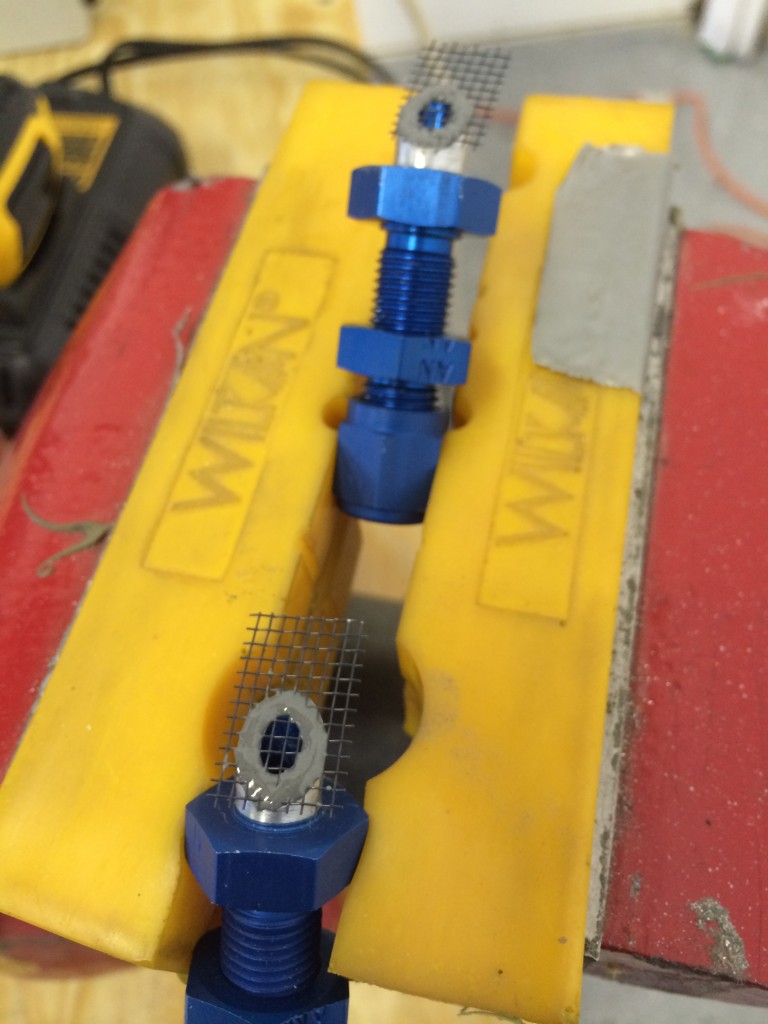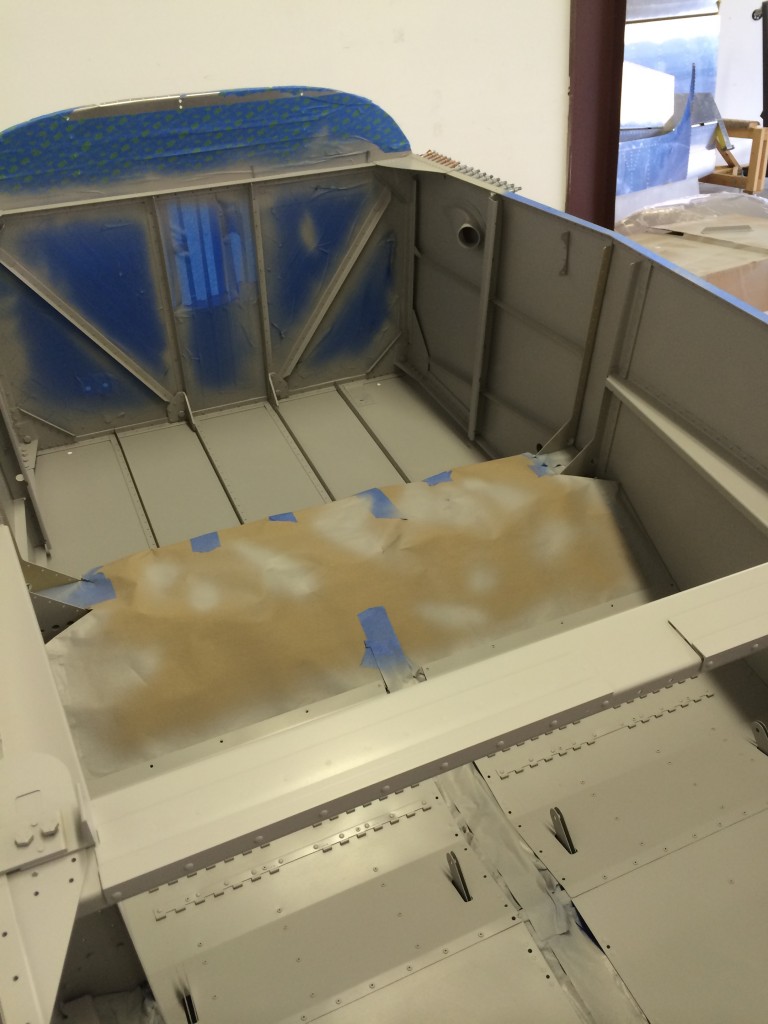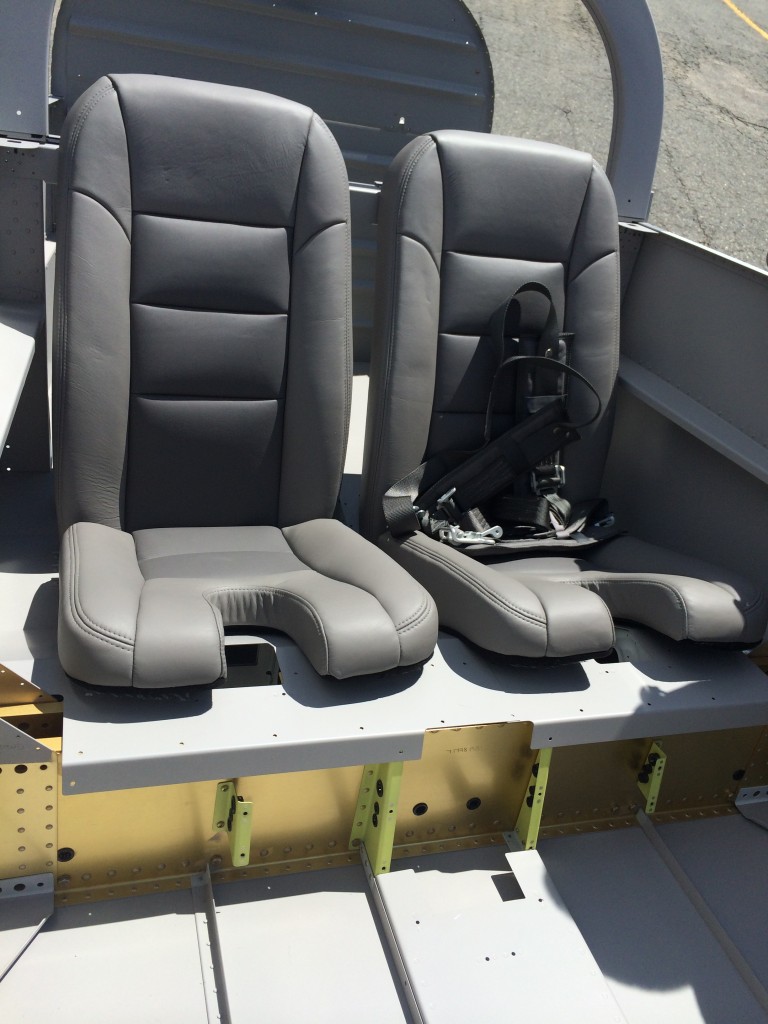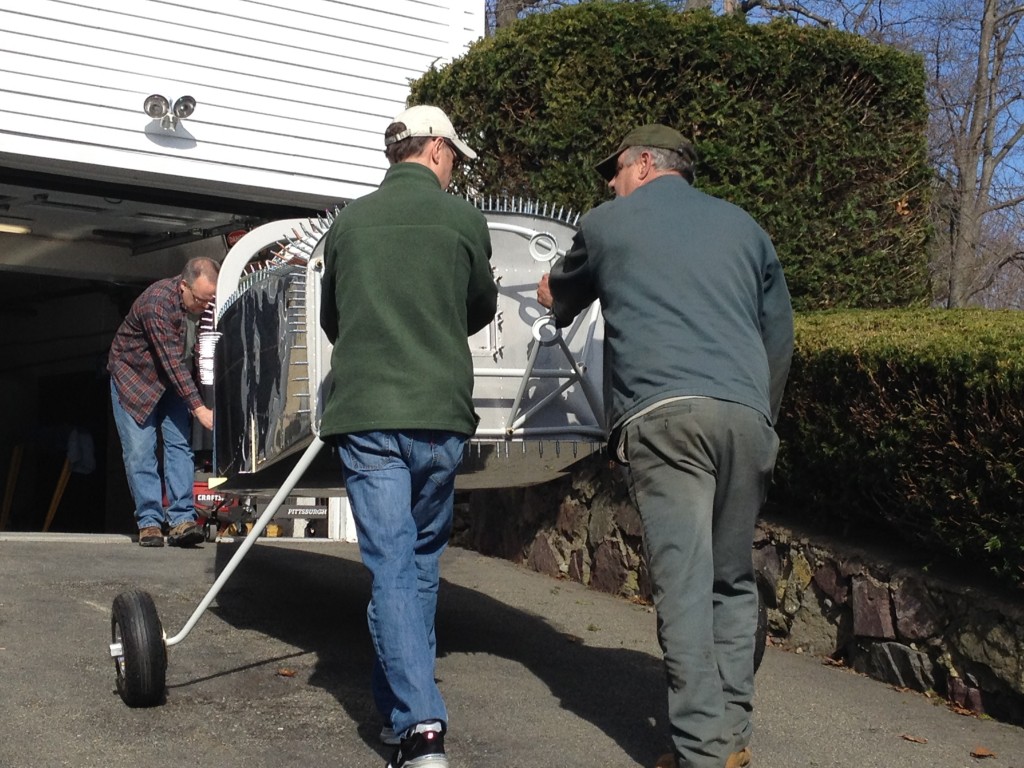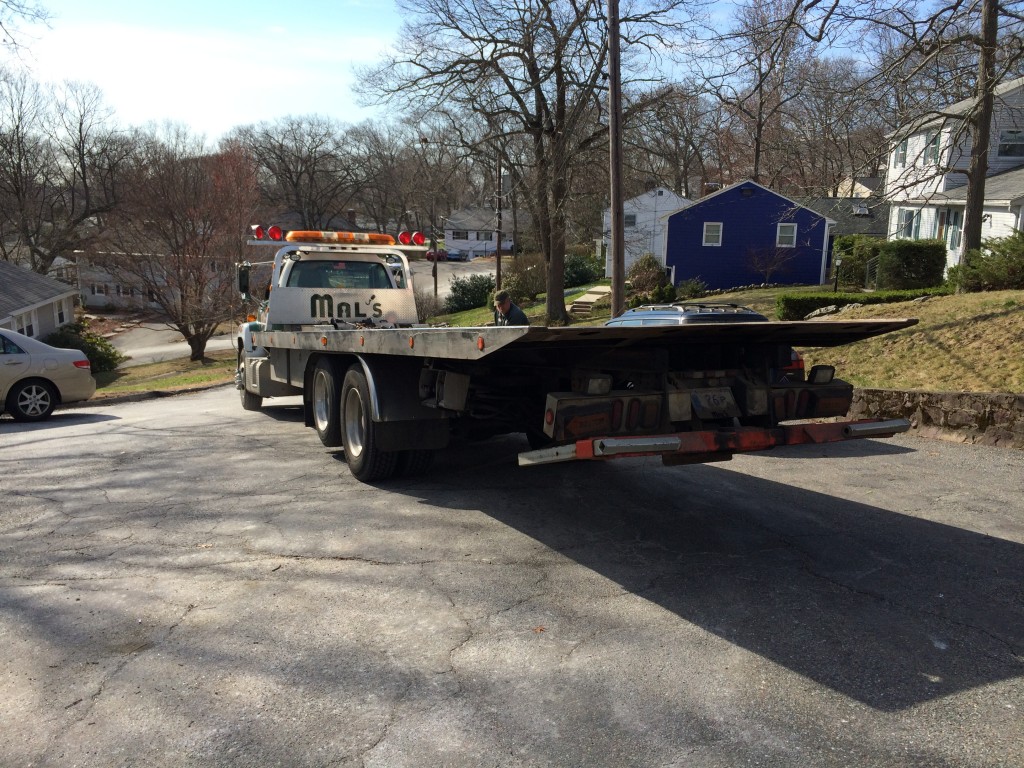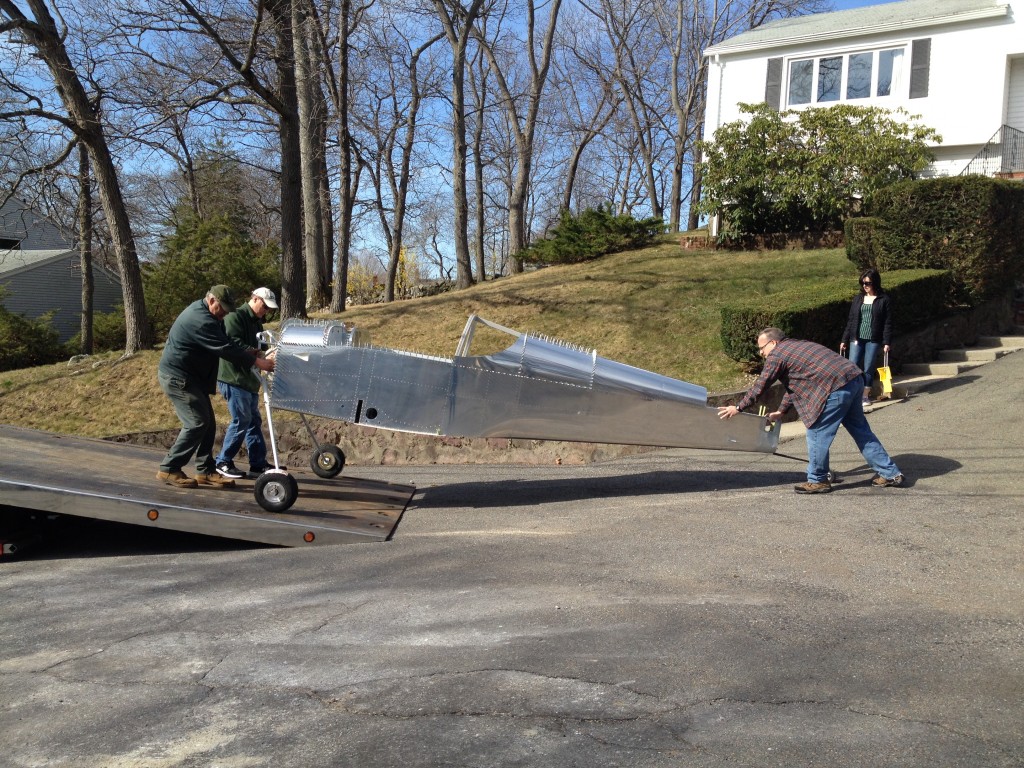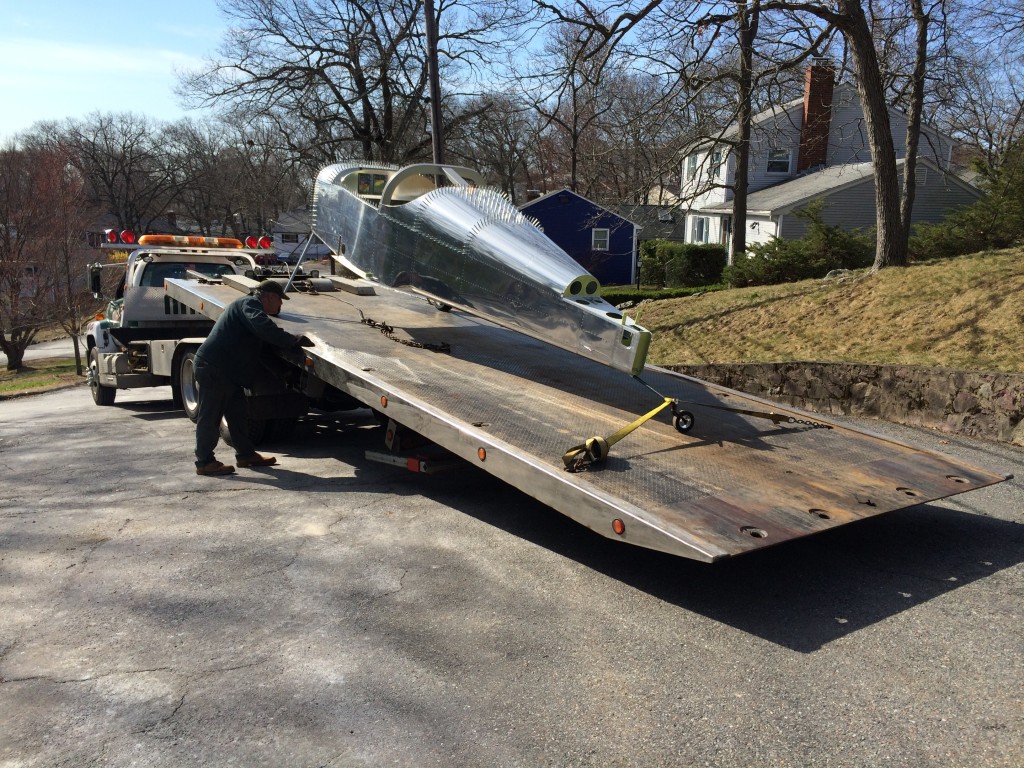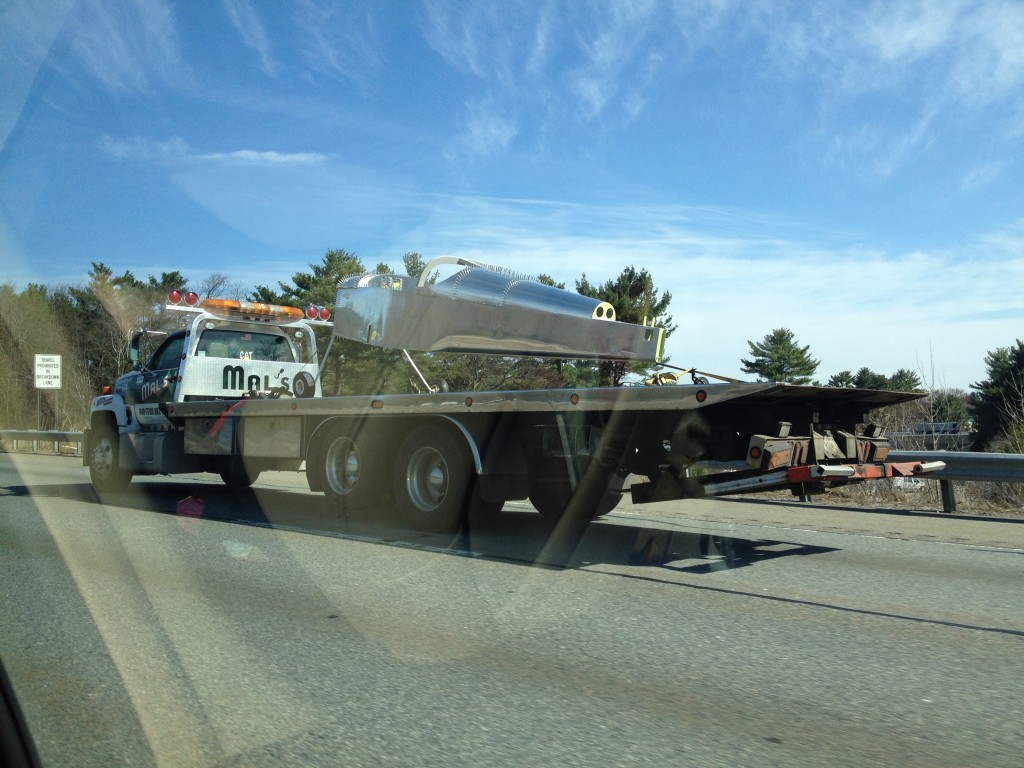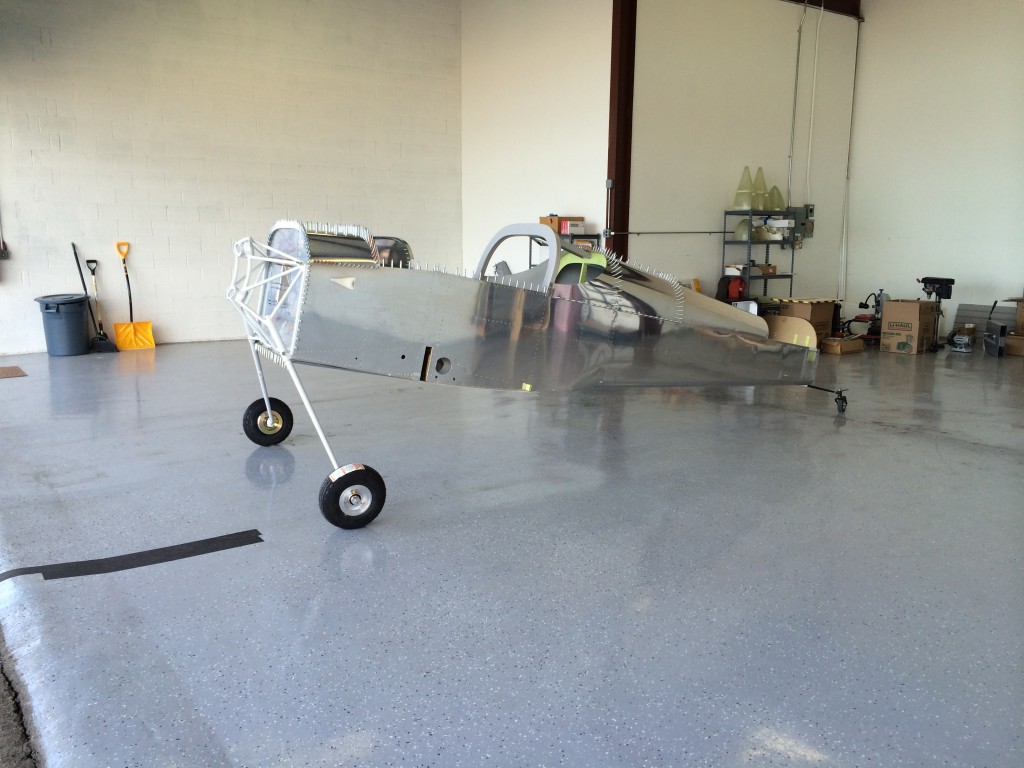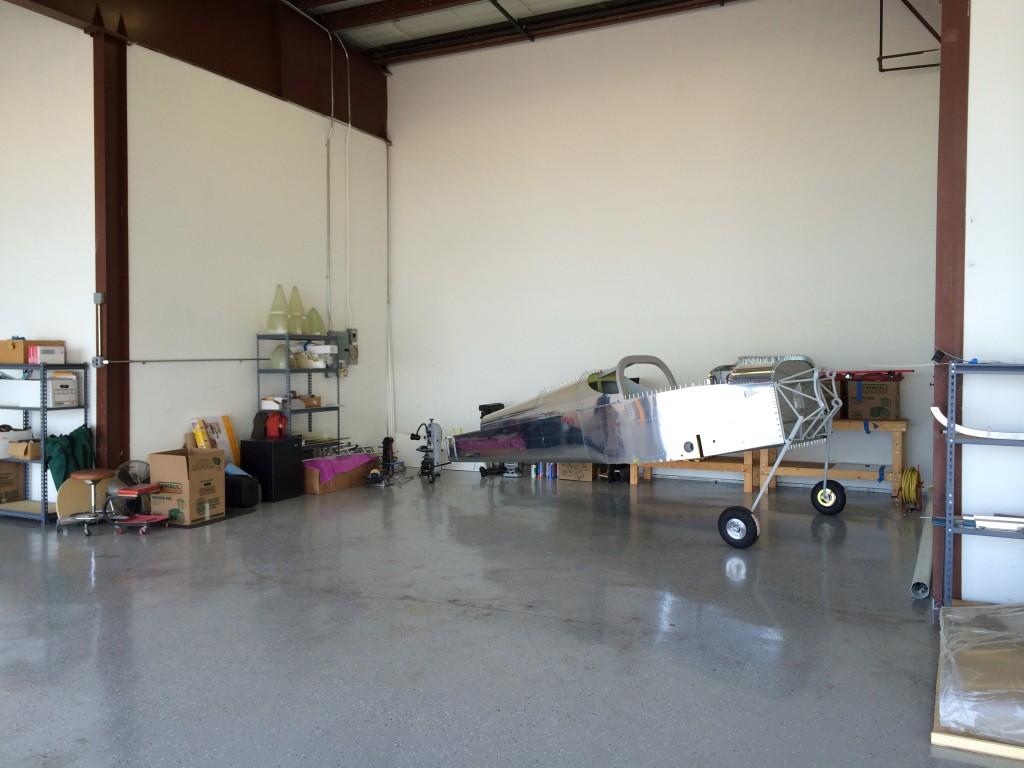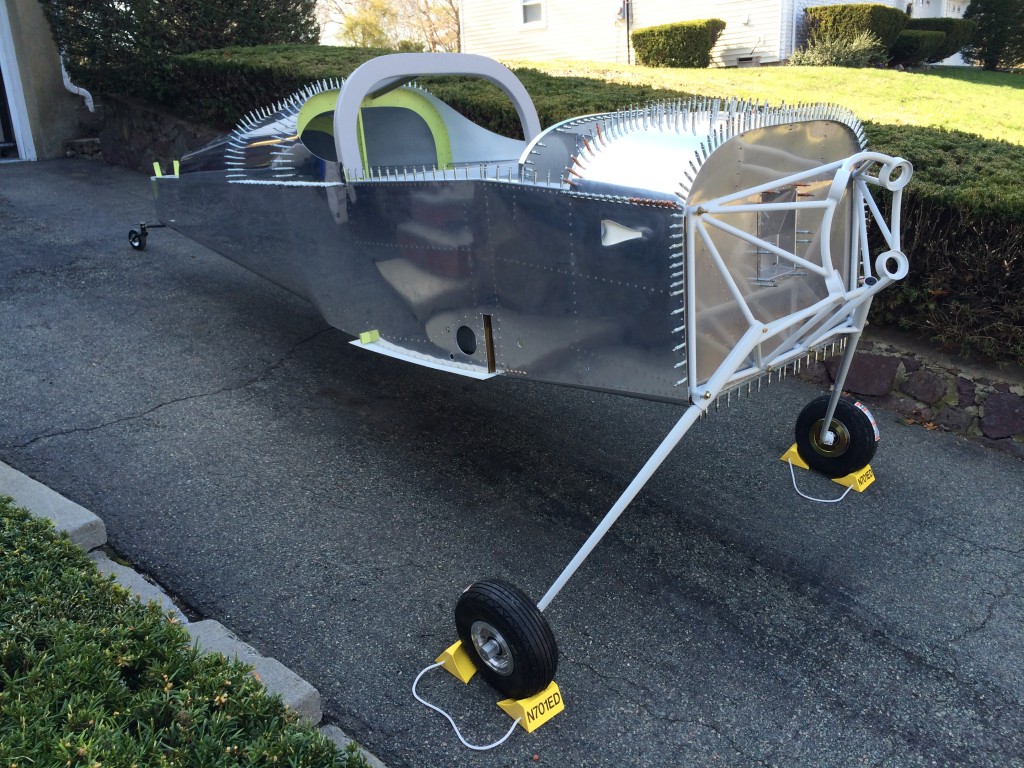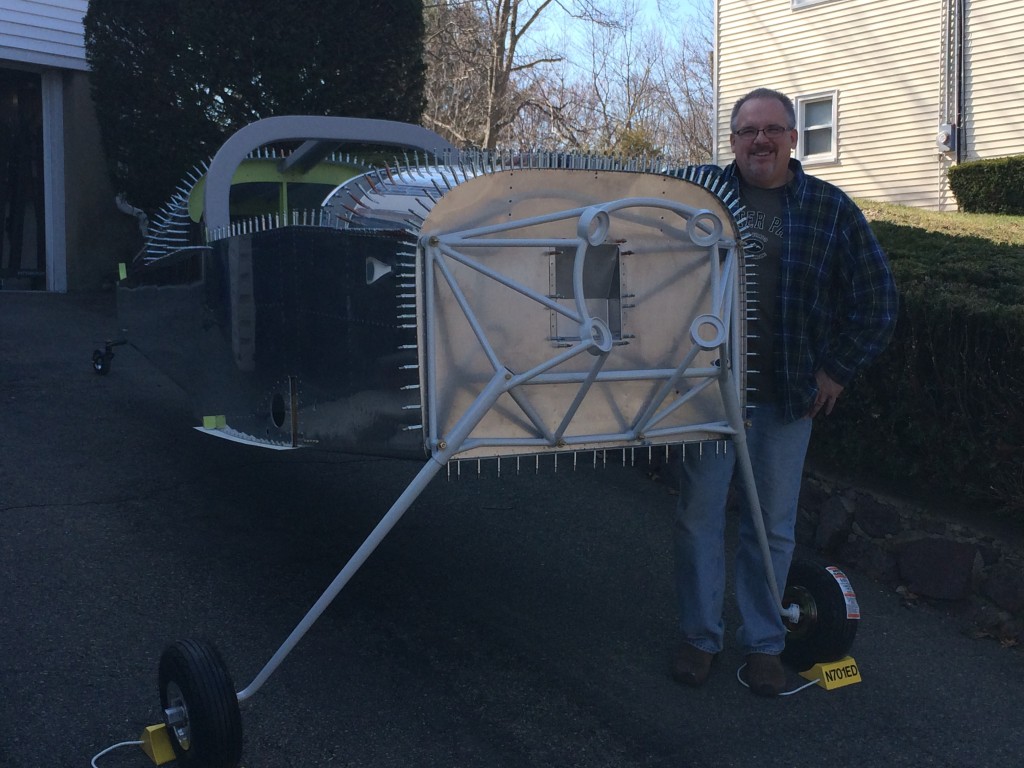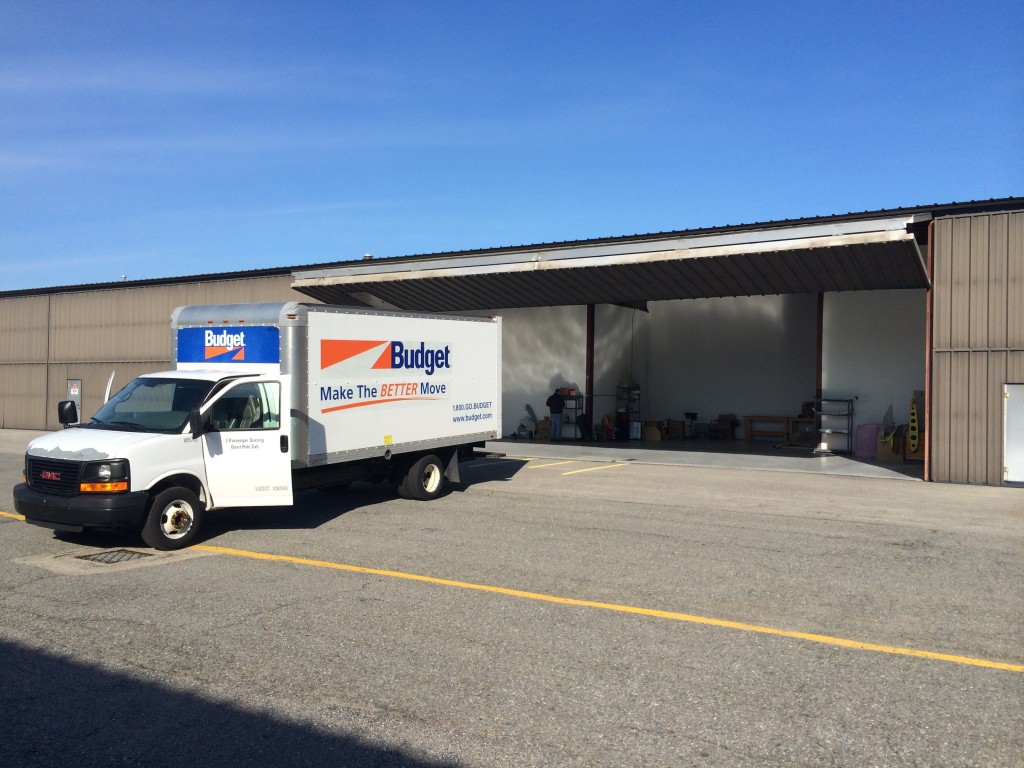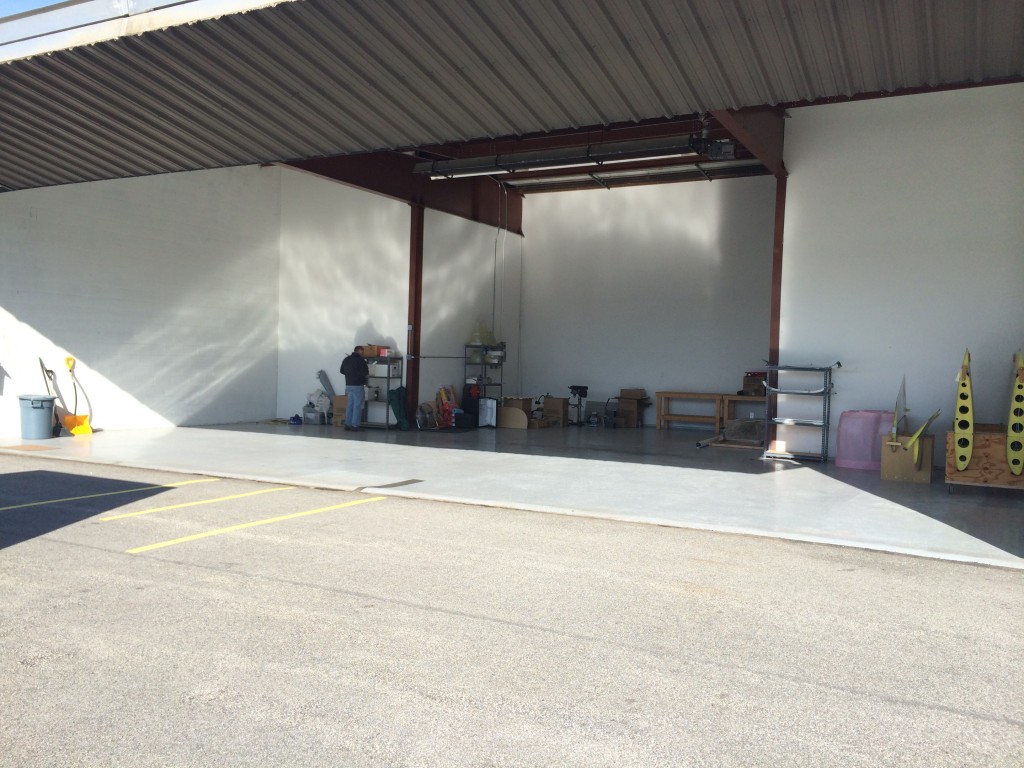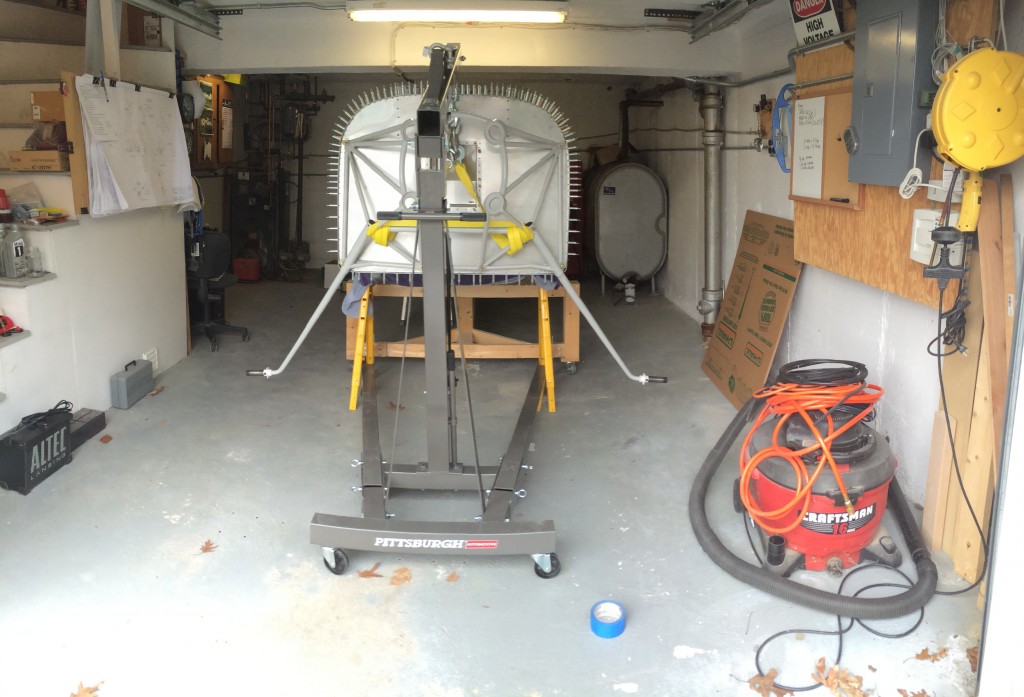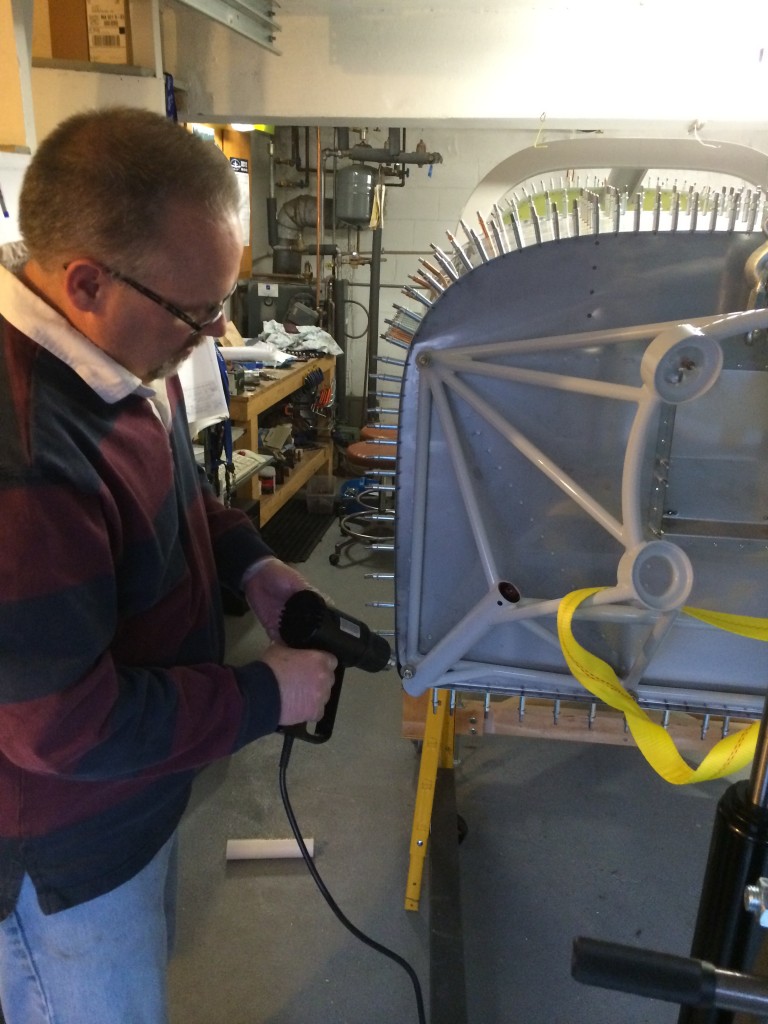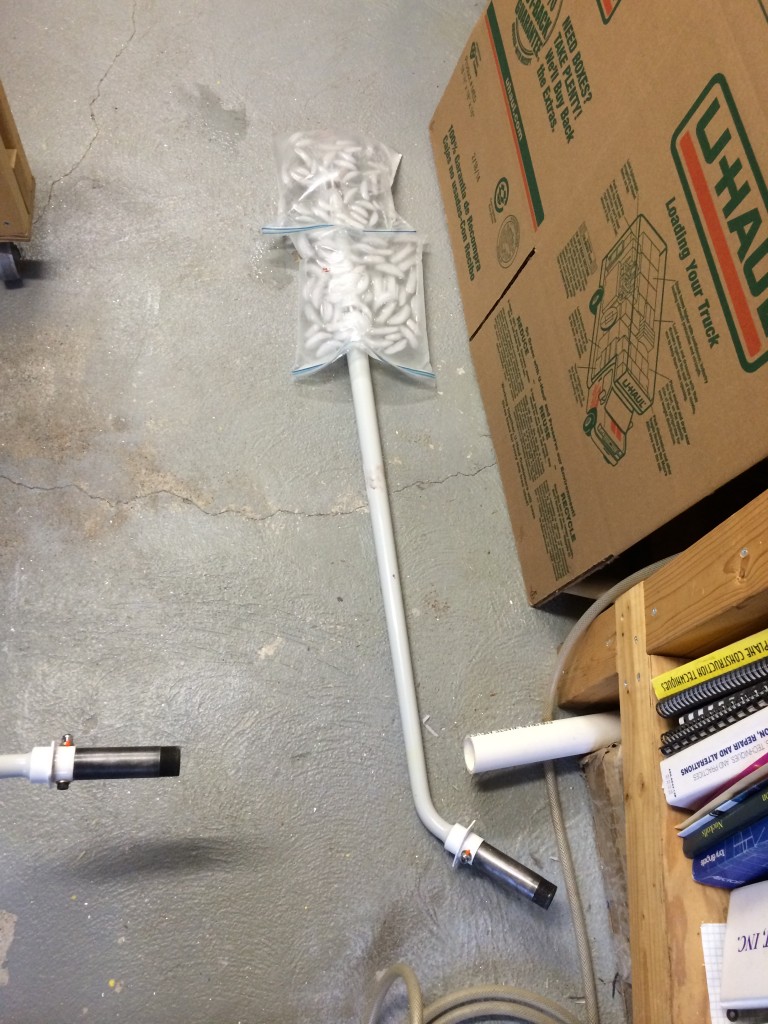With the the shop rearranged, there are a few prep things that need to be done before the wings can be fitted. First up is reinstalling the control stick mount assembly so the aileron pushrods can attached and rigged. The assembly was initially drilled to the F-704 bulkhead way back when I started the fuse a few years ago.
There are a lot of bolts and spacers that must be assembled in order so that there’s no sideload on the bearings when the bolts are tightened.
There are a couple of small washers that go on either side of the bolts that attach the control sticks, aileron pushrods and a connecting rod that makes sure the sticks move together.
These washers are a pain to maneuver without help, so I broke out the Avery washer wrenches…they did the trick.
The very last bolts to be installed were the ones that that hold the sticks to the mounts and allow them to move laterally. Because this is a rotating joint, normal Nylok self-locking nuts can’t be used – the castle nuts only get torqued enough to allow a cotter pin to be installed. I won’t do that until I’m ready to permanently install the control sticks.
On the other hand, they look so good that I might just leave them in!


